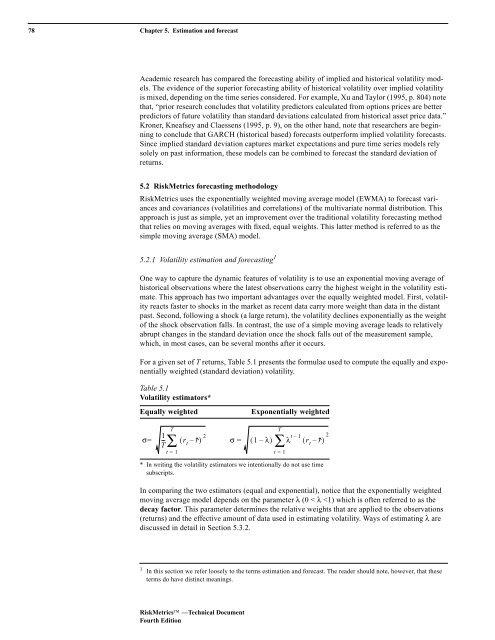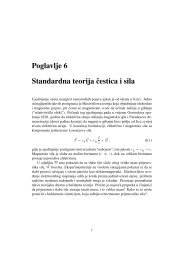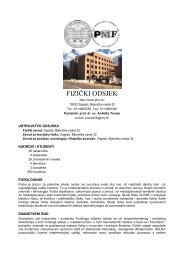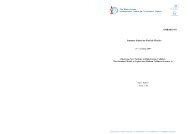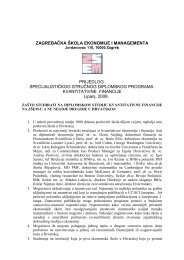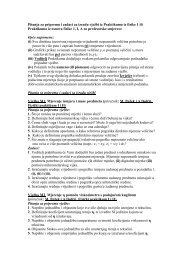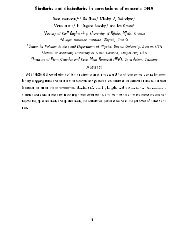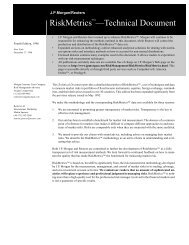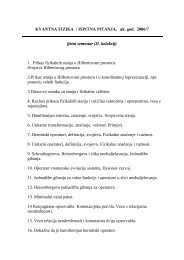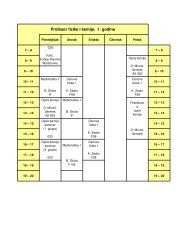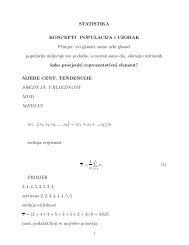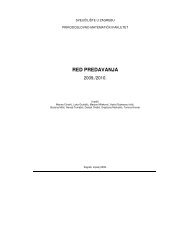RiskMetrics⢠âTechnical Document
RiskMetrics⢠âTechnical Document
RiskMetrics⢠âTechnical Document
Create successful ePaper yourself
Turn your PDF publications into a flip-book with our unique Google optimized e-Paper software.
78 Chapter 5. Estimation and forecast<br />
Academic research has compared the forecasting ability of implied and historical volatility models.<br />
The evidence of the superior forecasting ability of historical volatility over implied volatility<br />
is mixed, depending on the time series considered. For example, Xu and Taylor (1995, p. 804) note<br />
that, “prior research concludes that volatility predictors calculated from options prices are better<br />
predictors of future volatility than standard deviations calculated from historical asset price data.”<br />
Kroner, Kneafsey and Claessens (1995, p. 9), on the other hand, note that researchers are beginning<br />
to conclude that GARCH (historical based) forecasts outperform implied volatility forecasts.<br />
Since implied standard deviation captures market expectations and pure time series models rely<br />
solely on past information, these models can be combined to forecast the standard deviation of<br />
returns.<br />
5.2 RiskMetrics forecasting methodology<br />
RiskMetrics uses the exponentially weighted moving average model (EWMA) to forecast variances<br />
and covariances (volatilities and correlations) of the multivariate normal distribution. This<br />
approach is just as simple, yet an improvement over the traditional volatility forecasting method<br />
that relies on moving averages with fixed, equal weights. This latter method is referred to as the<br />
simple moving average (SMA) model.<br />
5.2.1 Volatility estimation and forecasting 1<br />
One way to capture the dynamic features of volatility is to use an exponential moving average of<br />
historical observations where the latest observations carry the highest weight in the volatility estimate.<br />
This approach has two important advantages over the equally weighted model. First, volatility<br />
reacts faster to shocks in the market as recent data carry more weight than data in the distant<br />
past. Second, following a shock (a large return), the volatility declines exponentially as the weight<br />
of the shock observation falls. In contrast, the use of a simple moving average leads to relatively<br />
abrupt changes in the standard deviation once the shock falls out of the measurement sample,<br />
which, in most cases, can be several months after it occurs.<br />
For a given set of T returns, Table 5.1 presents the formulae used to compute the equally and exponentially<br />
weighted (standard deviation) volatility.<br />
Table 5.1<br />
Volatility estimators*<br />
Equally weighted<br />
Exponentially weighted<br />
T<br />
∑<br />
1<br />
σ= -- ( r<br />
T t<br />
– r ) 2<br />
σ = ( 1 – λ) λ t – 1<br />
( r t<br />
– r) 2<br />
t = 1<br />
* In writing the volatility estimators we intentionally do not use time<br />
subscripts.<br />
T<br />
∑<br />
t = 1<br />
In comparing the two estimators (equal and exponential), notice that the exponentially weighted<br />
moving average model depends on the parameter λ (0 < λ


